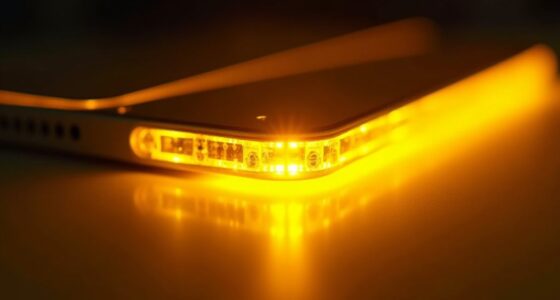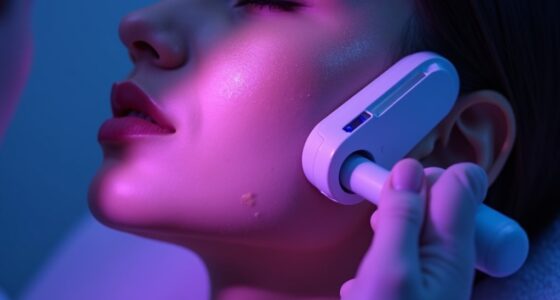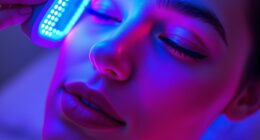To get the best results, avoid these five mistakes: skip regular sessions, pick the wrong light wavelengths for your goals, neglect proper skin prep and aftercare, overuse or underuse treatments, and ignore manufacturer instructions. Inconsistent routines reduce effectiveness, and using incorrect wavelengths won’t target issues properly. Proper preparation and following guidelines are key. Stay tuned to learn each mistake in detail and how to prevent them from sabotaging your progress.
Key Takeaways
- Skipping consistent sessions disrupts progress and reduces treatment effectiveness.
- Using incorrect light wavelengths fails to target specific skin concerns effectively.
- Neglecting proper skin preparation and aftercare diminishes results and may cause irritation.
- Overusing or underusing treatments can lead to irritation or minimal improvements.
- Ignoring manufacturer instructions or professional advice risks ineffective or unsafe therapy.
Skipping Consistency and Routine Scheduling
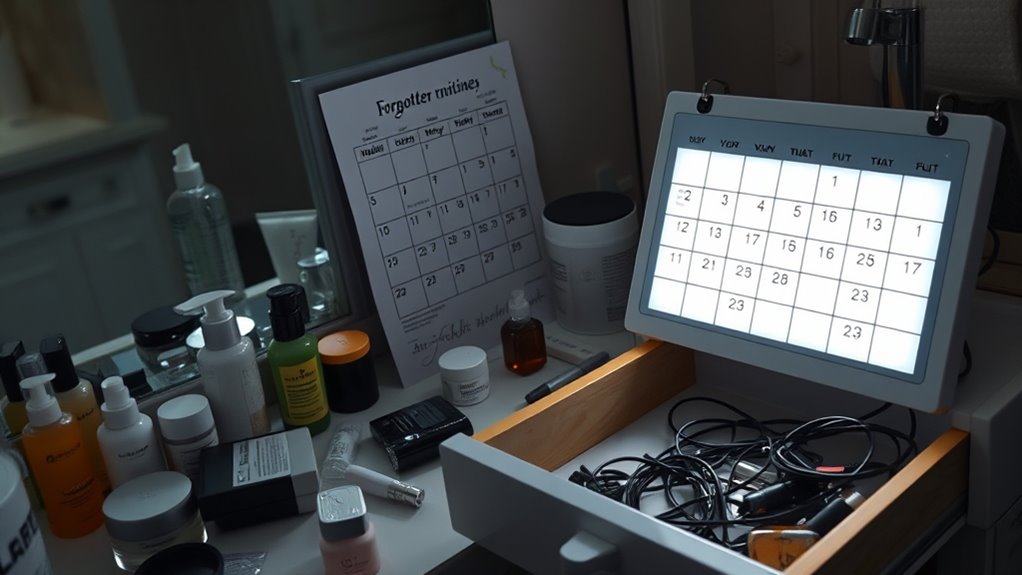
Skipping consistency and not sticking to a routine can substantially reduce the effectiveness of LED light therapy. Your daily schedule plays a vital role in maintaining treatment frequency, which is key to seeing results. If you skip sessions or vary the timing, your body doesn’t get used to the process, and progress stalls. It’s important to set a specific time each day for your treatments and stick to it. Regularity helps your skin respond better and maximizes benefits. Disrupting your routine can lead to inconsistent results and frustration. To get the most out of LED therapy, prioritize a steady schedule and treat sessions as important appointments. Consistency is your best tool for achieving clear, healthy skin over time. Incorporating well-being tips like maintaining a routine can further support your skin health journey.
Using the Wrong Light Wavelengths for Your Goals
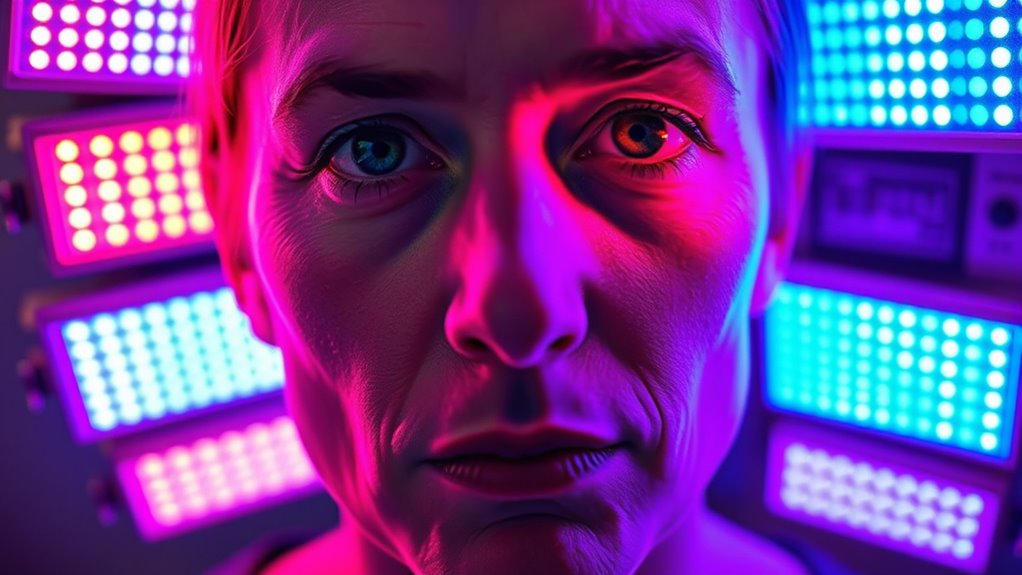
Choosing the right light wavelengths is key to achieving your specific skin goals with LED therapy. Wavelength selection directly influences treatment targeting, ensuring you address issues like acne, wrinkles, or inflammation effectively. Using the wrong wavelengths can lead to subpar results or wasted sessions. For example, blue light (around 415 nm) targets bacteria and reduces acne, while red light (around 630 nm) stimulates collagen and heals inflammation. Understanding these differences helps you customize your routine. Here’s a quick guide:
| Goal | Wavelength Range | Treatment Targeting |
|---|---|---|
| Acne | 405-415 nm | Bacteria and oil production |
| Anti-Aging | 630-660 nm | Collagen production, wrinkles |
| Skin Healing | 830-850 nm | Inflammation, tissue repair |
| Hyperpigmentation | 520-550 nm | Pigment reduction |
Additionally, integrating AI-powered devices into your routine can optimize treatment outcomes through personalized adjustments.
Ignoring Skin Preparation and Aftercare

Even if you’re diligent with your LED light therapy sessions, neglecting proper skin preparation and aftercare can substantially diminish your results. Before treatment, ensure your skin is clean and free of makeup, dirt, and oils, which helps the light penetrate effectively. Proper skin hydration is essential; well-hydrated skin responds better and recovers faster. When choosing aftercare products, opt for gentle, soothing options that support healing and avoid ingredients that could cause irritation or dryness. Using the right products can enhance your results and prevent setbacks like redness or breakouts. Skipping these steps may lead to less noticeable improvements and prolonged recovery times. Prioritizing skin preparation and aftercare isn’t just optional—it’s vital for maximizing the benefits of your LED light therapy routine.
Overusing or Underusing the Treatments
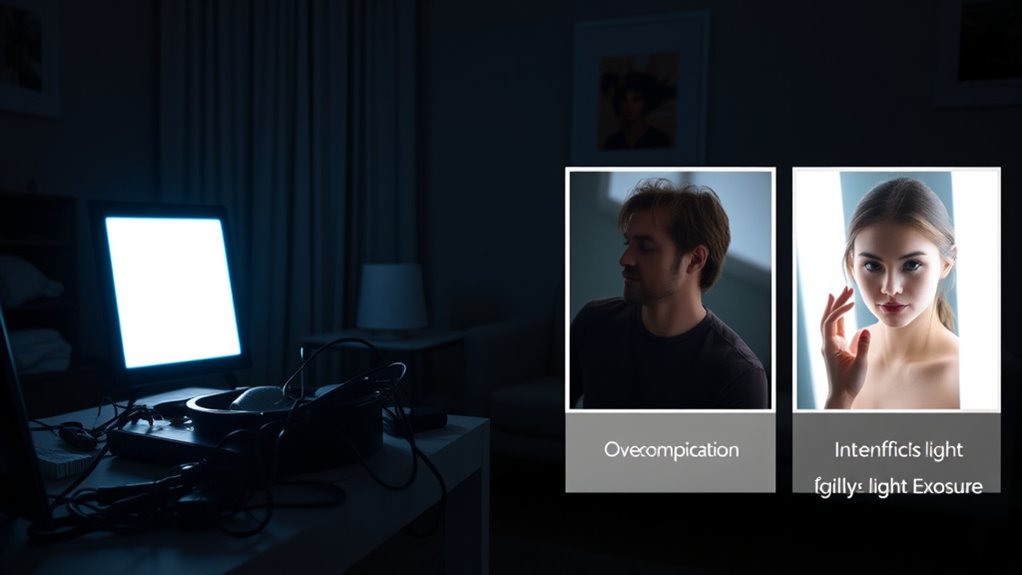
Using your LED light therapy treatments correctly is key to seeing real results. Overusing or underusing sessions can cause a frequency imbalance, reducing effectiveness or causing irritation. Too many treatments may lead to treatment overload, stressing your skin instead of healing it. Conversely, too few sessions won’t produce noticeable improvements. To avoid these issues:
- Stick to the recommended frequency on your device
- Don’t skip sessions or extend gaps unnecessarily
- Follow a consistent routine
- Watch for signs of irritation or discomfort
- Adjust your schedule if your skin reacts negatively
- Maintain proper device maintenance to ensure optimal performance
Not Following Manufacturer Instructions or Professional Guidance
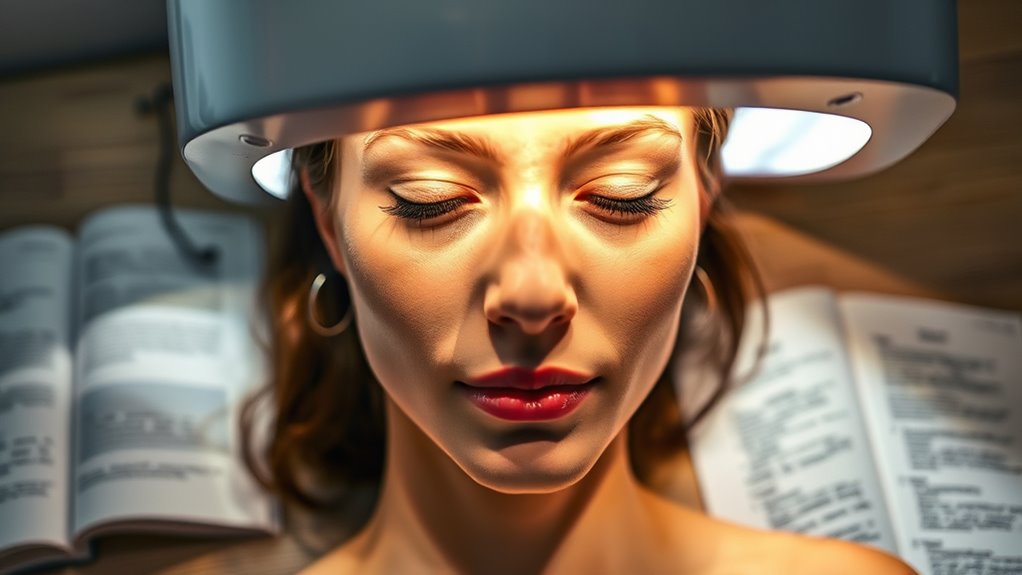
Failing to follow the manufacturer’s instructions or professional guidance can substantially diminish the effectiveness of your LED light therapy. Incorrect device calibration can lead to suboptimal light intensity, reducing results. Additionally, ignoring ingredient compatibility, especially if combining treatments, may cause skin irritation. Always read the user manual carefully and consult professionals for personalized advice. Here’s a quick guide:
| Aspect | Important Point |
|---|---|
| Device Calibration | Ensure the device is properly calibrated before use. |
| Ingredient Compatibility | Verify skincare products won’t interfere with therapy. |
| Follow Instructions | Stick to recommended duration and frequency. |
| Professional Guidance | Seek expert advice for tailored routines. |
Incorporating evidence-based practices can further enhance your treatment outcomes and ensure safety throughout your routine.
Frequently Asked Questions
How Long Should Each LED Therapy Session Last?
For ideal results, your LED light therapy session duration typically ranges from 10 to 30 minutes, depending on your device and skin concerns. You should aim for consistent treatment frequency, usually 3 to 5 times a week initially. Always follow your device’s guidelines and adjust session duration based on your skin’s response. Remember, overdoing it can cause irritation, so moderation and patience are key for best results.
Can I Combine LED Treatments With Other Skincare Products?
Imagine your skincare routine as a symphony—each product must harmonize perfectly. You can combine LED treatments with other skincare products, but pay attention to product compatibility and skincare layering. Use gentle, non-irritating products prior to or following your LED session. Avoid mixing harsh ingredients that might cause reactions. Always consult your dermatologist to confirm your products enhance, rather than hinder, your LED therapy results.
What Are the Signs of Overusing LED Light Therapy?
If you overuse LED light therapy, you might notice skin irritation, such as redness or sensitivity, and pigmentation changes, like darkening or light spots. Your skin could become inflamed or feel sore after treatments. Pay attention to how your skin reacts; if these signs appear, cut back on sessions and give your skin time to recover. Proper use guarantees you get benefits without risking damage or unwanted pigmentation issues.
Is LED Therapy Safe for All Skin Types and Tones?
You might wonder if LED light therapy is safe for all skin types and tones. Generally, it’s considered safe, but skin compatibility and tone suitability vary. Always check with a dermatologist to confirm it’s suitable for your specific skin. If you have darker skin tones or sensitive skin, discuss your concerns first. Properly tailored treatments help prevent adverse reactions, making LED therapy a safe, effective option for many skin types.
How Soon Will I See Results From LED Light Therapy?
Many believe LED therapy promises instant results, but that’s a common LED therapy myth. Usually, you’ll notice skin rejuvenation within 4 to 6 weeks of consistent sessions. While some see improvements sooner, patience is key. Your skin’s unique response influences the timeline, so stay committed. Keep in mind, a proper routine and realistic expectations help you achieve the best results, making the skin rejuvenation timeline worth the wait.
Conclusion
So, after all that, the biggest mistake might just be thinking you’ve got it all figured out. Ironically, the very errors you make—skipping routines, choosing wrong wavelengths, or ignoring instructions—could sabotage your results. It’s almost funny how trying to improve your skin can backfire if you don’t pay attention. But hey, now you’re aware. Just follow the guidelines, stay consistent, and avoid these pitfalls—your glow-up depends on it.


